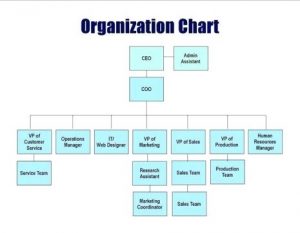Account-Based Selling (ABS) is necessary to execute effectively on Account-Based Marketing (ABM). ABS in the best  B2B commercial organizations is deployed effectively by using Value Propositions. A Forrester survey of buyer executives found that the first vendor to communicate a vision of value wins the business three quarters of the time. From a buyer’s perspective, that vision of value needs to be specific to their business and specific to their problems.
B2B commercial organizations is deployed effectively by using Value Propositions. A Forrester survey of buyer executives found that the first vendor to communicate a vision of value wins the business three quarters of the time. From a buyer’s perspective, that vision of value needs to be specific to their business and specific to their problems.
Part 1 of this blog series focused on Value Propositions as the most important piece of content for B2B Account-Based Selling. Good Value Propositions provide the 3 key ingredients of ABM for differentiated solutions by being helpful, specific and relevant, but the best Value Propositions for ABS are also robust to the challenges of live sales interactions with sophisticated customers.
Part 2 of this series highlighted the uses of great Value Propositions to address account-specific business problems and opportunities of a buying organization as a whole. A strong Value Proposition supports customer conversations that are account-specific with respect to (i) an account’s identity and business, (ii) its problems and objectives and (iii) the decisions it is considering.
As a buying process advances, great Value Propositions become more specific to the account, adapting to buyer  assumptions, business objectives and interests. In the hands of good sales teams, strong Value Propositions evolve from Flexible Case Studies early in the sales cycle to Customer Value Analyses during a customer evaluation to a Shared Business Case to Buy that helps sales teams speed the time to closing.
assumptions, business objectives and interests. In the hands of good sales teams, strong Value Propositions evolve from Flexible Case Studies early in the sales cycle to Customer Value Analyses during a customer evaluation to a Shared Business Case to Buy that helps sales teams speed the time to closing.
Stakeholders within an Account. Addressing a target account as a whole with relevant content is essential. Account-specific Value Propositions can and should become a Business Case to Buy for decision-makers in the account. But B2B buying decisions are usually a political process based on input from a number of individual stakeholders within the account. In 2016, according to Brent Adamson, the average number of stakeholders involved in a B2B purchasing decision had risen to 6.8. Understanding and connecting effectively with those stakeholders takes more than looking at their LinkedIn profiles. This blog focuses on stakeholders within an account and how sales teams can address them as audiences using Value Propositions as central content for ABM and ABS.
Sales teams are most effective when they engage with individual stakeholders, connecting specifically with a stakeholder’s individual problems, personal aspirations, appetite for risk and career objectives. Some stakeholders have  predictably narrow and parochial interests – focusing on these can help build support, win an advocate or neutralize an opponent. But personalizing content does not necessarily mean neglecting the benefits and value your solution can deliver to the organization as a whole. Customer organizers, advocates, champions and mobilizers arise in surprising places within buyer teams. Including content for account-based benefits can be useful, even while addressing the specifics of a stakeholder’s narrower self-interest.
predictably narrow and parochial interests – focusing on these can help build support, win an advocate or neutralize an opponent. But personalizing content does not necessarily mean neglecting the benefits and value your solution can deliver to the organization as a whole. Customer organizers, advocates, champions and mobilizers arise in surprising places within buyer teams. Including content for account-based benefits can be useful, even while addressing the specifics of a stakeholder’s narrower self-interest.
Characterizing Stakeholders. As they define and improve their sales processes, sales teams often go to great lengths to characterize buyer stakeholders. The buyer personae that sales enablement professionals and consultants identify are sometimes highly specific to their business and their product. Yet stakeholders who are part of a buying team can almost always be understood along two dimensions:
- Functional roles. Where do stakeholders sit in the organization? Are they in finance, sales, marketing, product management, manufacturing, service delivery, quality assurance, legal, procurement or product development?
- Buying roles. What is a stakeholder’s role in the buying process? Is an individual stakeholder a decision-maker, a key recommender, a champion, an organizer, an evaluator, an influencer, a user or a gatekeeper?
Functional roles are usually closely related to buying roles. However, for different solutions delivering different customer benefits, the relationships between functional roles and buying roles vary. We will consider each separately, looking at how Value Propositions can be deployed effectively by making them specific and relevant to a stakeholder’s functional role and by making them specific and relevant to a stakeholder’s buying role.
Value Propositions for Functional Roles. Regardless of differences in buyer org charts, functional departments are usually easy to identify: finance, sales, marketing, product management, manufacturing,  professionals delivering services, quality assurance, legal, procurement and product development. Their responsibilities and where they fit in the matrix may differ, but stakeholders from specific functions have distinct functional objectives, look at the world through a distinct lens and often have a distinct language. It pays to speak to professionals with different functional viewpoints in their own language.
professionals delivering services, quality assurance, legal, procurement and product development. Their responsibilities and where they fit in the matrix may differ, but stakeholders from specific functions have distinct functional objectives, look at the world through a distinct lens and often have a distinct language. It pays to speak to professionals with different functional viewpoints in their own language.
- Finance professionals look at the business with overall profitability in mind, measuring results in accounting terms: per quarter, per year and
 over the life of a piece of equipment. Naturally they focus on financial results where senior finance professionals are willing to look beyond hard costs to revenue and risk benefits. Finance professionals often have a technical language all their own (“ROI, hurdle rates, NPV, breakeven”) that they want others to speak. They ask about whether it makes sense to spend any money or make any change at all and tend to ask sharper questions about the timing of financial results. Sample Value Proposition messages addressed to finance include:
over the life of a piece of equipment. Naturally they focus on financial results where senior finance professionals are willing to look beyond hard costs to revenue and risk benefits. Finance professionals often have a technical language all their own (“ROI, hurdle rates, NPV, breakeven”) that they want others to speak. They ask about whether it makes sense to spend any money or make any change at all and tend to ask sharper questions about the timing of financial results. Sample Value Proposition messages addressed to finance include:
- “Our solution increases net income by $2.5 million per year.”
- “We generate €3 million in savings over the life of the equipment.”
- “An ROI of 300% over three years ought to meet your hurdle rates.”
- “Including implementation costs, the payback is a year and a half.”
- Sales management focuses on revenue outcomes and top line growth, tending to have urgency with respect to
 near term objectives and execution. After all, sales VP turnover is faster than that of their colleagues. Having come from a sales background, their skills usually include empathy, common sense and intuition. Their attention spans tend to be short. They can be persuaded by well-told, plausible stories about how you have delivered results rapidly for others.
near term objectives and execution. After all, sales VP turnover is faster than that of their colleagues. Having come from a sales background, their skills usually include empathy, common sense and intuition. Their attention spans tend to be short. They can be persuaded by well-told, plausible stories about how you have delivered results rapidly for others.
- “At Company XYZ, we were able to improve conversion rates for the average rep by one deal a year.”
- “After a 1-month roll-out, we saw sales cycles shorten by an average of 3 weeks and revenue increases of 10%. That would mean $x mm in increased sales for you.”
- “Look at how our solution automates call prep for sales. Reps who used to take 45 minutes to prepare for an in-depth call should be able to prepare in 25. That frees up 5% more time per rep for customer interactions.”
- “If your lead product has a 30% longer life with our compound, you ought to be able to increase volumes by at least 10%.”
- Marketing professionals are increasingly attuned to outcome metrics, focusing on the ROI of new initiatives,
 often juggling alternatives to fit within fixed budgets. Their orientation and bonuses are based on revenues. The best marketing professionals are usually good strategic project managers, with tendencies toward attention to detail and organizational process.
often juggling alternatives to fit within fixed budgets. Their orientation and bonuses are based on revenues. The best marketing professionals are usually good strategic project managers, with tendencies toward attention to detail and organizational process.
- “When we implemented this solution for Company XYZ, we increased their lead generation by 10% 3 months after kickoff. Based on your funnel metrics, this would generate $x mm in higher revenues.”
- “We’re likely to see ROI of 750% in the first year. What else in your current marketing spend delivers returns like that?”
- “Let’s look at how we would implement this for you. If we set a few key targets for web traffic and email open rates, after 6 months we should see revenue increases of $x mm per quarter.”
- Product managers tend to take a technical, operational and analytical approach to new alternatives. For this
 group, operating and performance metrics are front and center. Product managers may be one of the more demanding audience groups in looking for rigorous answers from sales teams.
group, operating and performance metrics are front and center. Product managers may be one of the more demanding audience groups in looking for rigorous answers from sales teams.
- “Let’s look at what this means for your onboarding. Here is a case study where our solution reduced installation costs by 30%.”
- “Our drug delivery technology improves patient compliance by 20%. Here is the clinical study. For your drug, think about what that would mean for patient outcomes and what that could mean for a price increase.”
- Manufacturing and professionals delivering a service (including doctors, nurses, consultants, lawyers,

 designers, support services) tend to think more in terms of operating metrics and outcomes. They also ask incisive questions about operating performance, technical performance and clinical performance. Knowing that things often go wrong, they tend to look hard at risk with a frequent bias toward risk aversion.
designers, support services) tend to think more in terms of operating metrics and outcomes. They also ask incisive questions about operating performance, technical performance and clinical performance. Knowing that things often go wrong, they tend to look hard at risk with a frequent bias toward risk aversion.
- “Let’s look at what this would mean for maintenance cost in your factory. Reducing maintenance by 15% means annual cost reduction of about €250,000.”
- “With our material, you should be able to increase yield by 5% in your production line. That would translate into $x k in additional revenues per year.”
- “Using our material means that you can eliminate this step in manufacturing which would save you €x per part produced.”
- “With our surgical system, we were able to reduce time in the operating room by 30 minutes per procedure.”
- “If you could eliminate nursing time spent on medical records by 15 minutes a day, that would mean x minutes per patient in additional nursing time for direct patient care.”
- Quality assurance, IT and legal professionals tend to focus on risk, even if some operations fall within their

 responsibilities. They tend to be risk averse given that their professional mandate is usually to avoid downside.
responsibilities. They tend to be risk averse given that their professional mandate is usually to avoid downside.
- “In your salmonella testing, how do you look at the rate of false positives? Have you thought about what false positives cost the business?”
- “When Company XYZ did a product recall, it cost them $x million. Here are the data showing that our test is more sensitive, improving your ability to spot product flaws.”
- “Think about the FDA enforcement action for Company XYZ. I don’t know how you look at this risk, but our compliance system should cut your exposure by at least half.”
- “Company XYZ’s data breach cost them $1.5 billion. Our security system would have prevented that event. Even if you see your risk of a breach as only one in a thousand that is still worth $1.5 million.”
- Procurement professionals, of course, focus visibly and directly on cost. Moving procurement beyond a direct price comparison to looking at cost-in use is important for many innovative products. Cost can be narrowly
 defined as price or it can be more broadly defined as the total cost of ownership. Revenue and risk management benefits may be lost on procurement professionals, given their remit and their incentives, so focusing on hard costs with them, while not giving up on other value drivers is usually a good idea. With procurement, the pressure that internal sponsors and decision-makers may bring to bear on them is rarely apparent to sales teams. This is usually by design, so building consensus on value elsewhere may be more powerful than you realize.
defined as price or it can be more broadly defined as the total cost of ownership. Revenue and risk management benefits may be lost on procurement professionals, given their remit and their incentives, so focusing on hard costs with them, while not giving up on other value drivers is usually a good idea. With procurement, the pressure that internal sponsors and decision-makers may bring to bear on them is rarely apparent to sales teams. This is usually by design, so building consensus on value elsewhere may be more powerful than you realize.
- “Our product may be more expensive per pound, but its strength and flexibility means that you need less of it, so it costs you less per part that you ”
- “The sticker price on our equipment is higher but, with its higher throughput, you only need two machines for your line instead of three.”
- “Our drug is more expensive per procedure, but the clinical studies show how much you can save in sparing other, more expensive drugs. This should be worth $x per procedure or $y per year.”
- “With our labor saving technology, your total cost of ownership over the contract horizon would be $x mm less than for your current approach.”
- “Maintenance cost savings of €x mm pays for the equipment and its installation after 14 months.”
- Product development professionals are under increasing pressure to improve the quality and success of new
 products they are developing. Faster timelines, more successful products, lower failure rates, earlier identification of failure are all messages that resonate with R&D teams. Since selling to product development is often about finding alpha and beta customers for collaborative, joint development projects on an extended basis, the economic impact of seemingly small differences may be significant.
products they are developing. Faster timelines, more successful products, lower failure rates, earlier identification of failure are all messages that resonate with R&D teams. Since selling to product development is often about finding alpha and beta customers for collaborative, joint development projects on an extended basis, the economic impact of seemingly small differences may be significant.
- “If you reduce drug candidate failure rates by 2%, think about what that means for the value of your drug pipeline.”
- “With its reduced stickiness, substituting our material for your current material has the potential to reduce manufacturing downtime by 15 minutes a day. That would be worth $x million in lost production per year.”
- “The environmental penalties in place next year would cost you about €x k annually. Substituting our product would eliminate them. That means €y in savings per tonne that you produce.”
- “Our software improves the productivity of your average R&D user by 10 minutes a day. That represents $x mm in cost per year.”
- C-suite. Strategic, disruptive products move faster through the sales cycle if your sales team can get 10 minutes

 with C-suite executives. Whether your target customers are private or public, you can count on the C-suite having short attention spans and wanting to get straight to the top and the bottom line. This is where your Value Proposition needs to provide a clear, simple elevator pitch.
with C-suite executives. Whether your target customers are private or public, you can count on the C-suite having short attention spans and wanting to get straight to the top and the bottom line. This is where your Value Proposition needs to provide a clear, simple elevator pitch.
- “Our trucks have 20% greater capacity with 10% better fuel efficiency. That means $x million in annual savings if you replace your fleet.”
- “Our software is more secure and easier to use for your online advisory clients. If we look at your current client base and how they access their accounts that could mean an increase of 5% or $x million in funds under management.”
- “Have you looked at the operating efficiencies and reduction of management headaches that outsourcing customer service would provide? With others, we have delivered 15-20% in operating cost savings. Too good to be true? What if we shared the performance risk and upside with you?”
- “Our airline furniture is better designed, more comfortable and 20% lighter. That means higher passenger satisfaction, increased load factors and €x million in annual fuel savings for the fleet.”
In sum, understanding and impacting the customer’s business at an account level is great. Being able to speak the functional language of stakeholders within the account strengthens the effectiveness of your team’s communication.
Value Propositions for Buying Roles. All B2B buying processes are different. For different solutions with different impacts, the functional composition of buying teams vary. Within a buying team, there are roles that individual stakeholders play in the buying process, some of which may evolve and many of which may not be obvious to a sales team. An individual stakeholder might play any or several of the following buying roles: sponsor, decision-maker, key recommender, champion or advocate, project manager, evaluator, influencer, user or gatekeeper. It is useful in addressing stakeholders to think about them as falling into 3 groups: organizers, influencers and gatekeepers.
- Organizers. Stakeholders who drive deals by getting them organized include sponsors, decision-makers, key recommenders and often project managers. Getting senior level organizers involved helps sales drive change.
 Organizers get involved in a buying process early and have skin in the game or partial ownership of the buying process. They tend to stay with a buying process through closing a deal and often continue to be accountable for the success of a purchase into implementation and beyond.Clearly, organizers are priority stakeholders for any sales team. Identifying organizers, qualifying them and connecting with them is the first job of a sales executive. For sales focused on organizers in the account, there are several sales objectives where Value Propositions are useful.
Organizers get involved in a buying process early and have skin in the game or partial ownership of the buying process. They tend to stay with a buying process through closing a deal and often continue to be accountable for the success of a purchase into implementation and beyond.Clearly, organizers are priority stakeholders for any sales team. Identifying organizers, qualifying them and connecting with them is the first job of a sales executive. For sales focused on organizers in the account, there are several sales objectives where Value Propositions are useful.
- Connect. The sales process seeks to convert organizers into evangelists, advocates and sponsors. This is where a Value Proposition, in the form of a Flexible Case Study, supports sales in substantive interpersonal engagements. Flexible Case Studies highlight what your solution does for your customers. At a personal level, Value Propositions help sales connect with stakeholder-specific business problems. At an organizational level, Value Propositions help sales connect with account-wide business problems. For organizers, both are important. Organizers meet their individual goals when they solve specific business problems. Organizers succeed organizationally, becoming heroes, when they solve account-wide business problems.
- Qualify. Early in the sales cycle, qualifying organizers is all-important. Using Flexible Case Studies to discuss the problems your solution addresses provides sales with insights into which, if any, of your differentiating messages resonate with that stakeholder. If the problems your solution addresses don’t engage an account stakeholder, then either the stakeholder isn’t qualified or the account isn’t qualified.
- Differentiate. Organizers, by definition, drive the process in purchasing and implementing your solution. At some point they need to make the case to buy and take that case through an internal approval process. Even if they have engaged on the basis of their personal self-interest, they need to understand, and eventually be persuasive internally on the complete picture of the value you deliver to the organization. That means that Value Propositions discussed with organizers should include account-wide benefits and value, not just the narrower functional interest of the organizer.If an organizer is preparing to move through an internal buying process, sales needs to be ready to talk about price when the stakeholder asks, if not before. Price comes up early in the sales cycle, often in an indicative, unspecific way, as teams decide whether to evaluate a solution. Price comes up later in the sales cycle, usually in a specific form that can be customized, negotiated and finalized. For differentiated, premium products, that means discussing value early, to set the context for any price discussions.
- Motivate. For organizers to drive a buying process, they need motivation. Sometimes they need courage. The inflection points that determine whether a buying process will result in a successful sale are the points when: (1) an organizer obtains commitment to evaluate a solution, (2) an organizer builds consensus to buy a solution following evaluation, and (3) an organizer gets approvals from gatekeepers whose organizational mandate is usually to buy slowly, cautiously and cheaply. Shared Value Propositions with organizer buy-in provide a shared vision about how your solution will deliver success to the buyer’s organization. This vision motivates organizers and bolsters their courage to move a buying process forward.
- Build consensus. Organizers need to build consensus among influencers. In most organizations this requires the skill and tools to herd cats. A Value Proposition, in the form of a business case to buy, is a focal point that serves as the foundation for building buyer internal consensus, as the outcome of an evaluation process.
- Influencers. Influencers are sometimes early catalysts, but in the middle of the sales cycle, as a larger buying team is assembled to evaluate a solution, a larger number of influencers usually enter the fray. These influencers may be formally designated as evaluators. They may be informal influencers with interest, relevant experience or expertise in areas related to the solution. As evaluation and implementation move forward,
 influencers usually include members of the buying team who will use and/or implement the product or solution. Post-sale, at renewal time, the primary influencers are usually users of the solution.Influencers are among the cats to be herded, not just by a buying organizer but also by sales teams. Although buy-in from many or most influencers is required to close a deal, influencers, unlike organizers, are often less motivated to spend time or bandwidth in evaluating your solution. They are rarely motivated to take risk in supporting a proposal. Value Propositions are useful with influencers in a number of ways.
influencers usually include members of the buying team who will use and/or implement the product or solution. Post-sale, at renewal time, the primary influencers are usually users of the solution.Influencers are among the cats to be herded, not just by a buying organizer but also by sales teams. Although buy-in from many or most influencers is required to close a deal, influencers, unlike organizers, are often less motivated to spend time or bandwidth in evaluating your solution. They are rarely motivated to take risk in supporting a proposal. Value Propositions are useful with influencers in a number of ways.
- Divide and conquer. Influencers have many agendas, sometimes innocuous but sometimes political. Large meetings, with a number of spectators, are usually a bad place to address tough, detailed questions from influencers. Some influencers hijack meetings with hard questions that are irrelevant to others. Taking detailed, stakeholder technical and value discussions offline for specific conversations, with sales subject matter experts, is a way to reduce the downside. Focused follow-up on distinct technical domains with distinct value drivers provides a rationale to push detailed follow-ups into smaller meetings.
- Focus on stakeholder-relevant discussions. Clearly-identified influencers are more likely to restrict their questions and concerns to topics that touch on their narrower interests. Sales team members can use good Value Propositions to focus targeted stakeholder conversations on the value drivers that resonate with those stakeholders.
- Provide just enough information. While some stakeholders like to opine on everything, most influencers realize that their role in a buying process is limited. With influencers in a meeting, it makes sense to provide just enough persuasive detail or “proof” to satisfy their questions about the value you deliver. With influencers in a meeting, value is a good agenda item while price is usually a topic for targeted discussion with organizers.
- Hold account-relevant value in reserve. While focusing on stakeholder-relevant value drivers, don’t take account-relevant value drivers out of the picture or off the table in presentation summaries. Many influencers raise fewer objections related to their own areas of interest when they realize that others have a powerful reason to buy. More importantly, you never know when a stakeholder will become an advocate, an evangelist or an organizer, where the larger organizational picture becomes part of their personal mission. Mobilizing these hidden influencers, highlighted in The Challenger Customer, helps to close more deals.
- Gatekeepers. Most substantial purchases encounter formal organizational approval processes that usually start later in the sales cycle, following a business team’s evaluation. The most frequently included gatekeepers are purchasing specialists from procurement. Other finance personnel may be required for sign-off, depending on
 the size and financial impacts of a commitment or purchase. For contractual commitments, legal review is usually required. If a solution has a technological component, IT usually needs to sign off as well.As stakeholders, gatekeepers are rarely incentivized to take risks or to make speedy decisions. They usually view risk management as part of their mandate. There are some solutions where gatekeepers are among the primary organizers, but these are rare. Value Propositions are useful to sales in moving deals forward with gatekeepers both directly and indirectly through organizers working through their approval processes.
the size and financial impacts of a commitment or purchase. For contractual commitments, legal review is usually required. If a solution has a technological component, IT usually needs to sign off as well.As stakeholders, gatekeepers are rarely incentivized to take risks or to make speedy decisions. They usually view risk management as part of their mandate. There are some solutions where gatekeepers are among the primary organizers, but these are rare. Value Propositions are useful to sales in moving deals forward with gatekeepers both directly and indirectly through organizers working through their approval processes.
- Communicate function-specific value. Risk-reducing solutions may directly impact gatekeeper objectives even if they are not primarily targeted to gatekeeper functions. If they do, the value of risk reduction should resonate with gatekeepers as stakeholders. Communicate risk reduction and other directly relevant value to gatekeepers, whether or not that component of value justifies your price premium on its own.
- Build urgency with your organizer. Sales rarely has easy, direct access to gatekeepers. A consensus business case to buy, shared between an organizer and sales, is a strong foundation for motivating and enabling organizers to sponsor a deal as it moves through an internal buying process.
- Support your organizer’s internal case. A good Value Proposition, as a strong business case to buy, supports an organizer as they navigate internal processes and helps them communicate in language relevant to the gatekeepers they are trying to move through approvals.
- Use value in price negotiations. Good Value Propositions, presented early, may help avoid a price negotiation altogether. When faced with procurement demands for price cuts, sales should draw on previous value conversations by responding with proposals with price-value tradeoffs. The result may be an effective defense of the original price proposal. In any event, answering price with value conveys confidence to procurement professionals trained to spot and exploit fear.
Some stakeholders are more important than others, but ignoring individual concerns is high risk. Finding ways for sales team members to connect individually with buyer stakeholders using Value Propositions provides your sales team with an advantage.
Value Propositions for Sales Team Collaboration with Stakeholders. As you make substantial investments in ABM, what related ABS content are you developing to deliver sales results? What does your marketing team expect your sales team will say when they are in front of the customer? Your sales teams should compete with your competitors and partner with your key accounts. Partners need to understand each other’s business objectives specifically. Partners also need to develop relationships with individual stakeholders. Helpful, specific, relevant and robust Value Propositions are the cornerstone of an effective ABS program. The best B2B enterprises deploy Value Propositions to improve B2B sales performance, addressing sales challenges in a way consistent with an organization’s sales training, throughout the B2B sales cycle. It isn’t hard to start value selling or to generate value selling momentum. Value Propositions provide core sales content that helps sales teams engage in specific, relevant conversations about what your solution does for your customers and for its individual stakeholders. Value Propositions are a shared basis for collaboration that help sales teams win.
For more information on quantifying value for Value Propositions, see Can Your Sales Team Sell Your Solution’s Value? Can You?
For more information on designing Value Propositions see Designing Value Propositions for Sales Conversations
Click here to request a 15-minute demo of LeveragePoint
This is Part 3 of a 5-Part series. Part 4 will highlight the benefits of ABS for sales effectiveness while Part 5 will focus on the benefits of ABS for pricing strategy and execution.

